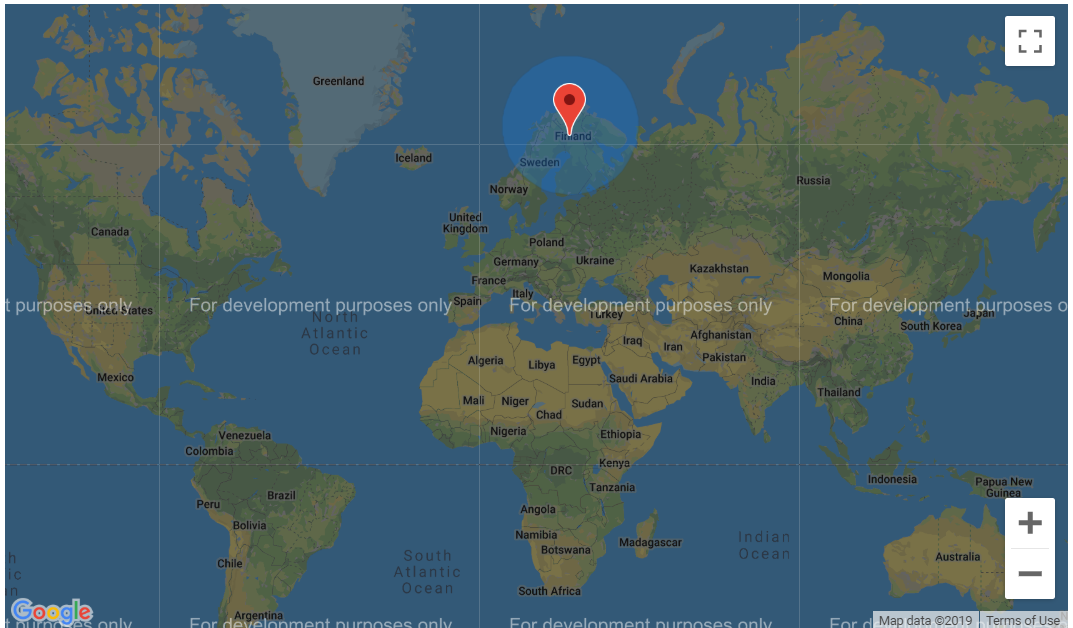I'm building a web app that allows the user to search the database based on his Google Maps location and a customizable search area around the location. I've noticed that when I keep the radius of the circle constant (500 miles) the circle is a lot smaller when I place it near the equator then when I place its center in Finland. At first I thought this was caused by a coding error but upon inspection I could find none. Now my second guess is that this sudden change is perhaps caused by the curvature of the Earth. The more the latitude value moves away from 0 (the equator) the larger the circle becomes.
What causes my circle to enlarge when I move my position to one of the poles and how can I prevent the circle from increasing?
With what constant do I need to correct the radius input after each Google Maps position change?
500 mile blue circle near the Equator
500 mile blue circle in Finland which is rendered a lot larger






